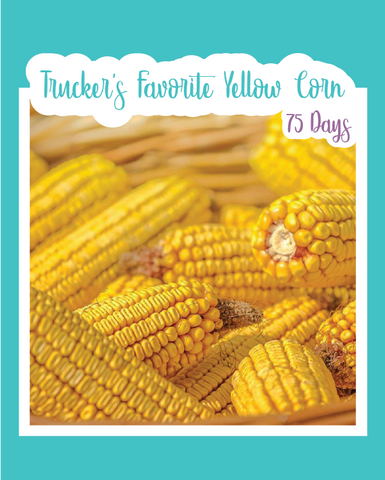
Strawberry Pop Corn
Seed Count: Approx. 20 seeds
Days to Maturity: 100-110 days
Description: Strawberry Pop Corn is a productive, popular heirloom variety that produces cute, jewel like, ruby red kernels, on 2-3 inch ears. When dried, the kernels taste great popped as a snack, and also make lovely fall decorations. Each compact, 4-5 ft. stalk will produce 2-4 ears, per stalk, that are shaped like giant strawberries! This lil cutie is definitely a show stopper, and is a fun variety for gardeners of all experience levels to grow in their gardens.
How To Grow
Sowing: One week, after frost, or when the soil consistently reaches 60 degrees F (corn will not germinate if soil temps are less than 55 degrees), plant the corn 1" deep and 8-12" apart. Plant blocks of four short rows (or in squares, if you are in a small space. I plant 4 corn stalks per sq. ft.) to ensure good pollination. Long skinny rows will result in poor pollination. Germination can take 5-6 days. Companion plant corn with, peas, cucumbers, squash, or pole beans; plants that like shade, like lettuce, also grows well with corn. However, avoid planting tomatoes near corn, since they share similar pests, and compete for vertical space and nutrients. Corn can also be grown in containers that are at least 12 inches deep and wide (4 plants can grow in a container this size).
Growing: Corn requires large quantities of water and fertilizer to produce full healthy ears. Give corn 1 1/2 inches of water per week, and make sure to remove weeds so they do not compete for water and nutrients. To increase chances of proper pollination, hand pollinate by shaking the plants several times a day, to make sure the pollen reaches corn silks. To reduce problems with army worms, and corn ear worms, the organic compound Spinosad can be used on corn tassels and new growth once a week. This corn grows to about 5-6 feet tall.
Harvesting: Harvest corn ears, after you have allowed them to dry on their stalks to use as popping corn or as decor. To save seeds, leave corn on its stalks to completely dry in the field. They are ready to harvest for seeds or meal/flour, when the stalk and the ears turn completely brown with no green coloring. However, since continued rainy weather and humidity compromises the quality of the ears, drying them inside may be the best route. Choose a dry location with moderate heat, but out of direct sunlight; hang the stalks upside down, or lay them out flat until they are dry enough seed storage.




